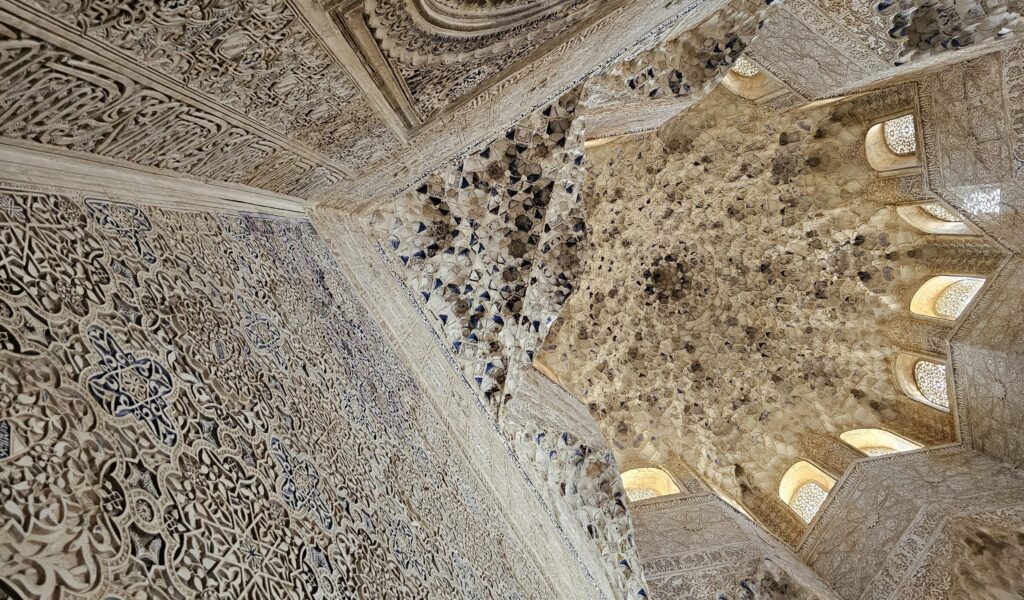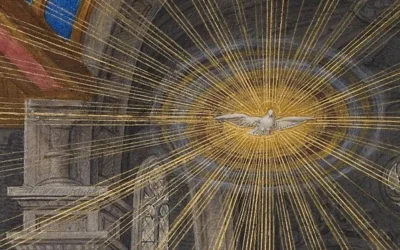Who was Suhrawardi?
Shahab al-Din Yahya ibn Habash Suhrawardi (1154-1191), known as Shaikh al-Ishraq or the “Master of Illumination,” was a Persian philosopher, mystic, and founder of the illuminationist school of Islamic philosophy. His works, such as Hikmat al-Ishraq (The Philosophy of Illumination) and Hayakil al-Nur (The Temples of Light), offer a unique synthesis of Zoroastrian, Platonic, and Islamic ideas, and present a vision of reality as a hierarchy of lights emanating from the divine source. Suhrawardi’s philosophy of illumination, which emphasizes the primacy of direct spiritual experience and the transformative power of self-knowledge, has significant parallels with the insights of the perennial philosophy and depth psychology.
Moreover, Suhrawardi’s ideas had a profound influence on the French scholar Henry Corbin, who played a crucial role in introducing Suhrawardi’s thought to the West and interpreting it through the lens of Jungian psychology. Corbin’s work, in turn, had a significant impact on the Swiss psychologist Carl Jung, who incorporated many of Suhrawardi’s key concepts, such as the imaginal world and the archetypal realm, into his own depth psychological framework.
This essay will explore the key themes and ideas in Suhrawardi’s thought, consider their relevance for the contemporary understanding of the psyche and the process of individuation, and examine the historical and conceptual connections between Suhrawardi, Corbin, and Jung.
2. The Primacy of Light (Nur)
2.1 The Metaphysics of Light
The central concept in Suhrawardi’s philosophy is that of light (nur), which he sees as the fundamental reality underlying all existence. For Suhrawardi, light is not merely a physical phenomenon, but a metaphysical principle that emanates from the divine source and pervades all levels of reality. He distinguishes between two kinds of light: the “light of lights” (nur al-anwar), which is the ultimate source of all existence, and the “accidental light” (nur al-‘arid), which is the manifestation of the divine light in the physical world. Suhrawardi also posits a hierarchy of immaterial lights, or “lords of species” (arbab al-anwa’), which serve as the archetypal forms and guiding principles of the various levels of existence.
2.2 The Implications for the Perennial Philosophy
Suhrawardi’s metaphysics of light has significant implications for the perennial philosophy, as it points to a common spiritual reality that underlies the diversity of the world’s religious traditions. The idea of a divine light that emanates from a supreme source and manifests in various forms is found in many spiritual traditions, such as the Vedic concept of Brahman, the Kabbalistic doctrine of Ein Sof, and the Christian notion of the Logos. Suhrawardi’s hierarchy of immaterial lights also resonates with the perennial philosophical idea of a “great chain of being,” a cosmic order that extends from the divine source to the material world. His emphasis on the direct experience of the divine light through spiritual practice and self-knowledge also reflects the perennial philosophical view of spirituality as a transformative process of inner realization.
2.3 The Relevance for Depth Psychology
Suhrawardi’s metaphysics of light also has significant implications for depth psychology, particularly for the understanding of the nature of consciousness and the process of individuation. From a depth psychological perspective, the idea of a divine light that underlies all existence can be seen as a metaphor for the transpersonal dimension of the psyche, the archetypal realm that contains universal patterns and symbols. The hierarchy of immaterial lights that Suhrawardi posits can be seen as a psychological map of the various levels of consciousness, from the personal to the collective to the universal. His emphasis on the direct experience of the divine light through self-knowledge and spiritual practice also resonates with the depth psychological view of individuation as a process of inner exploration and transformation.
3.The World of Image (Alam al-Mithal)
3.1 The Concept of the Imaginal World
Another key theme in Suhrawardi’s philosophy is the concept of the “world of image” or “alam al-mithal.” Similar to Ibn Arabi’s notion of the imaginal world, Suhrawardi sees the world of image as an intermediate realm between the physical world and the spiritual world, a domain of subtle forms and archetypal symbols that are experienced as objectively real. For Suhrawardi, the imaginal world is the realm of the soul, where the divine lights are manifest in their most direct and immediate form. He also emphasizes the role of the imagination as a cognitive faculty that can access and navigate this realm, and that has the power to shape and transform reality in accordance with the divine will.
3.2 The Implications for the Perennial Philosophy
Suhrawardi’s concept of the imaginal world has significant implications for the perennial philosophy, as it points to a common spiritual geography that underlies the diversity of the world’s religious traditions. Many of the symbols, archetypes, and subtle forms that Suhrawardi describes in his writings are also found in other spiritual traditions, such as the Platonic forms, the Buddhist pure lands, and the Christian heavenly realms. This suggests a universal dimension of human experience that transcends cultural and historical differences, and that is accessible through the faculty of the imagination. Suhrawardi’s emphasis on the transformative power of the imagination also resonates with the perennial philosophical view of spirituality as a process of inner alchemy and realization.
3.3 The Relevance for Depth Psychology and the Influence on Jung via Corbin
Suhrawardi’s concept of the imaginal world had a profound influence on the French scholar Henry Corbin, who played a crucial role in introducing Suhrawardi’s thought to the West and interpreting it through the lens of Jungian psychology. Corbin coined the term mundus imaginalis to refer to the imaginal world, which he saw as a realm of archetypal images and symbols that mediate between the sensible and the intelligible, the physical and the spiritual.
For Corbin, the mundus imaginalis was not merely a subjective or fantastical realm, but an objective and ontologically real domain that could be accessed through the faculty of active imagination. He argued that this realm was the source of visionary experiences, prophetic dreams, and symbolic encounters that have played a central role in the history of religion and spirituality.
Corbin’s ideas, in turn, had a significant impact on Carl Jung, who incorporated the concept of the mundus imaginalis into his own depth psychological framework. Jung saw the imaginal world as a key aspect of the collective unconscious, the transpersonal dimension of the psyche that contains universal patterns and symbols. He argued that engaging with the imaginal world through practices such as active imagination, dream work, and symbol analysis was essential for the process of individuation, the integration of the conscious and unconscious aspects of the psyche.
Jung also drew on Suhrawardi’s hierarchy of lights and the idea of the “lords of species” in his theory of archetypes, which he saw as universal patterns and symbols that structure the psyche and guide the process of individuation. Jung’s concept of the Self, the archetype of wholeness and the guiding principle of the individuation process, bears a striking resemblance to Suhrawardi’s idea of the “light of lights,” the ultimate source of all existence and the goal of spiritual realization.
Thus, Suhrawardi’s illuminationist philosophy, as interpreted and popularized by Corbin, had a significant influence on the development of Jungian psychology and its understanding of the imaginal world, the collective unconscious, and the process of individuation. By positing the reality of an intermediate realm between matter and spirit, and emphasizing the transformative power of the imagination and symbolic experience, Suhrawardi and Corbin laid the groundwork for a depth psychological approach that recognizes the ontological and epistemological significance of visionary and archetypal experiences.
4 The Path of Illumination (Tariqat al-Ishraq)
4.1 The Stages of Spiritual Realization
A third key theme in Suhrawardi’s philosophy is the path of illumination, or the process of spiritual realization and transformation. For Suhrawardi, this path involves a gradual ascent through the various levels of reality, from the physical world to the imaginal world to the spiritual world of pure light. He describes this ascent in terms of four stages or “journeys”: the journey from the created world to the divine lights, the journey within the divine lights, the journey from the divine lights to the “light of lights,” and the journey within the “light of lights.” Each stage involves a progressive purification and illumination of the soul, a shedding of the veils of ignorance and illusion, and a realization of the ultimate unity of all existence in the divine source.
4.2 The Implications for the Perennial Philosophy
Suhrawardi’s concept of the path of illumination has significant implications for the perennial philosophy, as it points to a common process of spiritual realization that underlies the diversity of the world’s religious traditions. The idea of a gradual ascent through various levels of reality, culminating in a unitive experience of the divine source, is found in many spiritual traditions, such as the Neoplatonic concept of the “return to the One,” the Sufi doctrine of fana (annihilation) and baqa (subsistence), and the Kabbalistic notion of the “rectification of the soul.” Suhrawardi’s emphasis on the direct experience of the divine light through spiritual practice and self-knowledge also reflects the perennial philosophical view of spirituality as a transformative process of inner realization.
4.3 The Relevance for Depth Psychology
Suhrawardi’s concept of the path of illumination also has significant implications for depth psychology, particularly for the understanding of the process of individuation and the role of spiritual practice in psychological growth and transformation. From a depth psychological perspective, the four stages of the illuminationist path can be seen as analogous to the stages of the individuation process, in which the ego gradually integrates the contents of the unconscious and realizes its essential unity with the Self. The emphasis on purification, illumination, and the shedding of illusions also resonates with the depth psychological view of individuation as a process of inner alchemy and transformation, in which the base elements of the psyche are transmuted into spiritual gold. Suhrawardi’s emphasis on the importance of spiritual practice and self-knowledge in this process also reflects the depth psychological view of the role of inner work and self-reflection in psychological growth and healing.
5.1 Suhrawardi’s Illuminationist Project
Suhrawardi’s philosophy of illumination represents a profound and original attempt to rethink the Islamic philosophical tradition in light of Platonic, Zoroastrian, and mystical ideas and insights. His metaphysics of light, epistemology of presence, and cosmology of imaginal forms offer a powerful challenge to the dominant philosophical paradigms of his time, and point towards a more holistic, experiential, and transformative understanding of reality and the human soul. While deeply rooted in the Islamic intellectual tradition, Suhrawardi’s thought also displays striking affinities with the perennial philosophy and key ideas in depth psychology, suggesting his potential relevance for contemporary understandings of spirituality and the psyche.
5.2 The Influence on Corbin and Jung
Moreover, Suhrawardi’s ideas had a profound influence on the French scholar Henry Corbin, who played a crucial role in introducing Suhrawardi’s thought to the West and interpreting it through the lens of Jungian psychology. Corbin’s concept of the mundus imaginalis, which he developed based on his reading of Suhrawardi and Ibn Arabi, had a significant impact on Carl Jung’s understanding of the collective unconscious and the archetypal realm. Jung’s theory of archetypes, his emphasis on the transformative power of symbolic experience, and his conception of the individuation process all bear the imprint of Suhrawardi’s illuminationist philosophy, as mediated through Corbin.
Thus, while there is no evidence of a direct influence of Suhrawardi on Jung, there is a clear line of transmission from Suhrawardi to Corbin to Jung, which attests to the enduring relevance and fecundity of Suhrawardi’s ideas for the development of depth psychology and the modern understanding of the psyche. By positing the reality of an imaginal world that mediates between matter and spirit, and emphasizing the transformative power of visionary and symbolic experience, Suhrawardi and Corbin laid the groundwork for a depth psychological approach that recognizes the ontological and epistemological significance of archetypal realities and the process of individuation.
5.3 Relevance for the Contemporary World
As we grapple with the challenges and crises of the contemporary world, Suhrawardi’s illuminationist philosophy offers a rich resource for rethinking our relationship with the sacred, the cosmos, and our own deepest nature. His emphasis on the primacy of spiritual experience, the reality of the imaginal world, and the transformative power of self-knowledge resonates with the emerging insights of transpersonal psychology, archetypal studies, and contemplative neuroscience. At the same time, his vision of the philosopher-king and his ethics of illumination raise important questions about the relationship between spirituality and power, and the role of wisdom in governance and social transformation.
Engaging with Suhrawardi’s thought in a critical and creative way can help us to develop new frameworks for integrating the spiritual and the political, the personal and the collective, in service of a more just, sustainable, and enlightened world. It can also deepen our understanding of the interplay between East and West, tradition and modernity, and the enduring relevance of perennial wisdom for the challenges of our time. As we continue to explore the frontiers of human consciousness and the possibilities of spiritual transformation, Suhrawardi’s illuminationist philosophy remains a vital and inspiring resource for the journey ahead.
Mystics and Gurus



























0 Comments